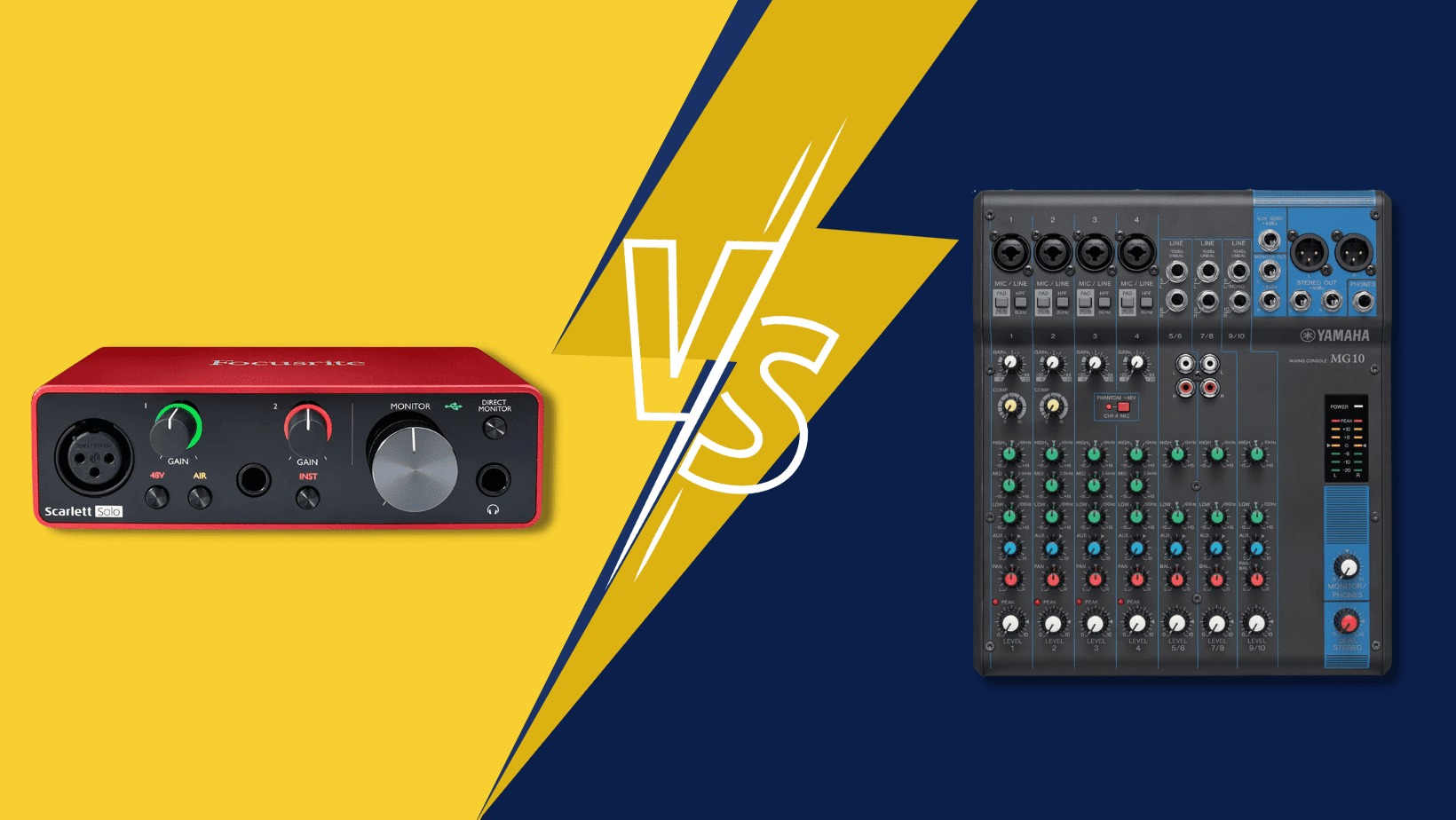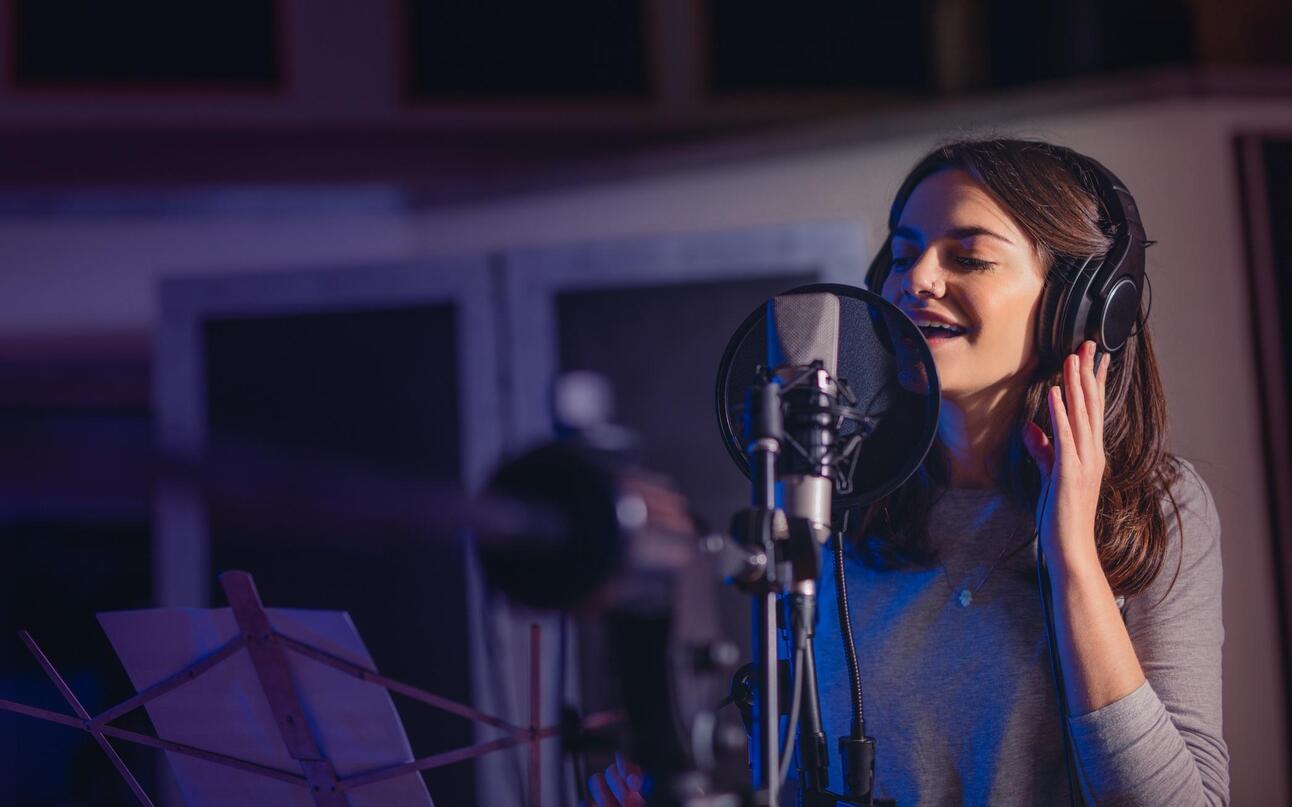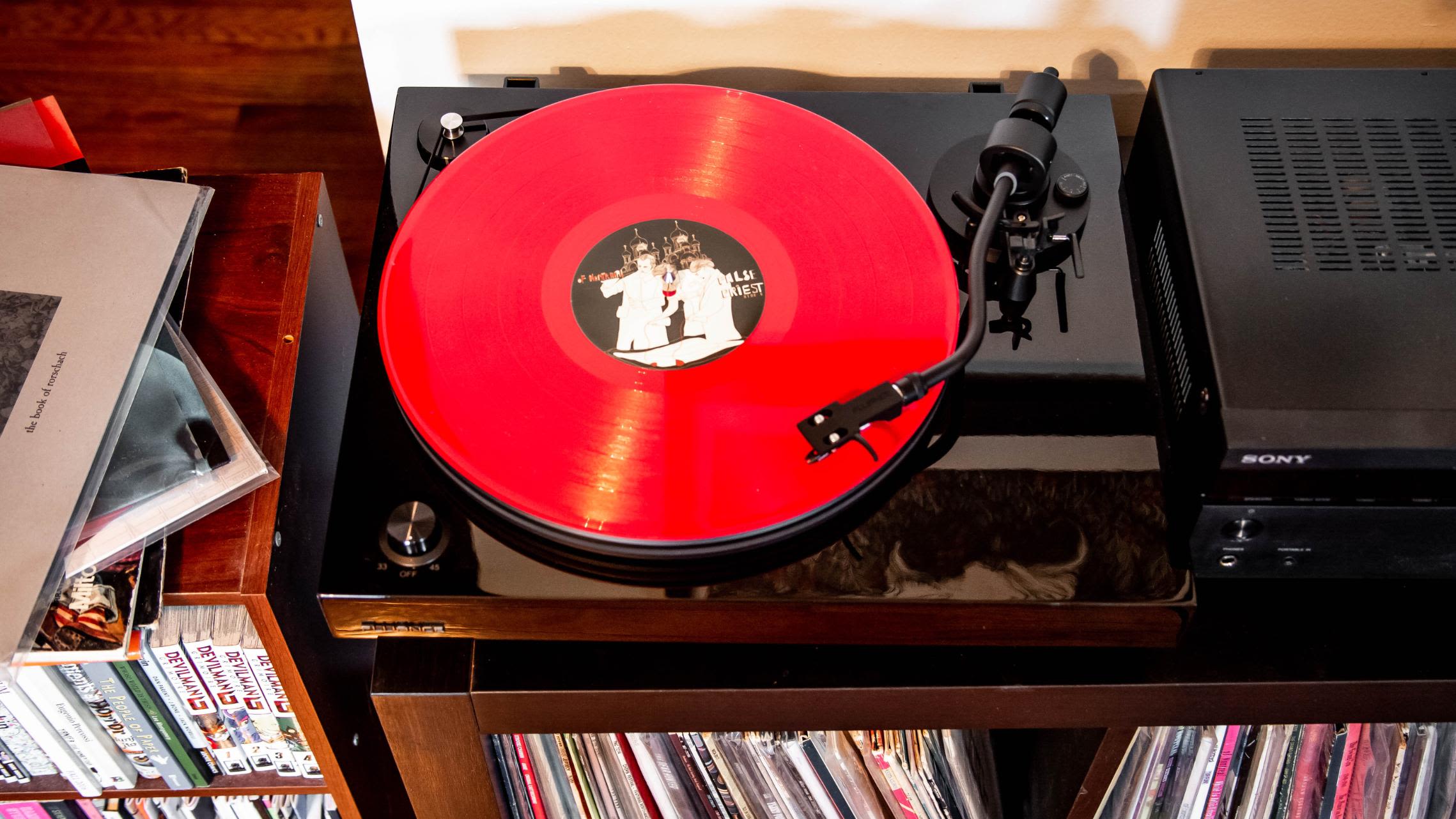Home>Production & Technology>Audio Interface>What Is The Difference Between Audio Interface And Mixer


Audio Interface
What Is The Difference Between Audio Interface And Mixer
Modified: February 19, 2024
Discover the key dissimilarities between an audio interface and a mixer. Understand their respective functions and choose the best device for your audio needs.
(Many of the links in this article redirect to a specific reviewed product. Your purchase of these products through affiliate links helps to generate commission for AudioLover.com, at no extra cost. Learn more)
Table of Contents
- Introduction
- Overview of Audio Interface
- Components and Functions of an Audio Interface
- Advantages and Benefits of Using an Audio Interface
- Limitations of an Audio Interface
- Overview of Mixer
- Components and Functions of a Mixer
- Advantages and Benefits of Using a Mixer
- Limitations of a Mixer
- Key Differences Between Audio Interface and Mixer
- Choosing the Right Option: Audio Interface or Mixer
- Conclusion
Introduction
In the world of audio production and recording, both professional and amateur musicians and producers rely on a variety of equipment to capture and reproduce high-quality sound. Two essential tools in this process are audio interfaces and mixers. While they may seem similar at first glance, they serve different purposes and have distinct features that cater to specific needs.
This article aims to provide a comprehensive overview of audio interfaces and mixers, discussing their components, functions, advantages, limitations, and the key differences between the two. Whether you are a seasoned audio professional or a beginner just diving into the world of audio production, understanding these tools is crucial for achieving optimal audio quality and workflow efficiency.
An audio interface acts as the bridge connecting your computer or recording device to the outside world. It serves as the intermediary between your analog audio sources, such as microphones or instruments, and the digital realm of your computer. On the other hand, a mixer allows you to control and manipulate the audio signals from multiple sources simultaneously, whether it’s for live sound reinforcement or studio recording.
By understanding the unique features and functionalities of both audio interfaces and mixers, you can make informed decisions when selecting the right tool for your specific audio needs. Whether you are setting up a home studio, recording a live performance, or mixing tracks for a professional album, having the proper equipment is crucial for achieving your desired results.
So, whether you’re a musician, podcaster, audio engineer, or content creator, continue reading to gain a deeper understanding of audio interfaces and mixers, their components, functions, advantages, limitations, and how to choose the right option based on your specific requirements.
Overview of Audio Interface
An audio interface is a device that serves as the bridge between your analog audio sources and your computer or recording device. It converts analog audio signals into digital data that can be processed and manipulated using recording software. Audio interfaces come in various shapes and sizes, ranging from compact portable units to larger rack-mounted interfaces.
One of the primary functions of an audio interface is to provide high-quality analog-to-digital and digital-to-analog conversion. This ensures that the audio signals remain clear and transparent throughout the recording and playback process. The audio interface also typically includes preamps, which amplify the low-level signals from microphones or instruments to line level for recording.
In addition to conversion and preamp features, audio interfaces often offer multiple input and output options. These can include XLR, TRS, and MIDI inputs/outputs, allowing you to connect various audio sources and control devices to the interface. Audio interfaces also come equipped with headphone outputs and dedicated volume controls for monitoring during recording and playback.
Today, many audio interfaces connect to your computer via USB, Thunderbolt, or PCIe connections, ensuring high-speed data transfer for low latency recording and playback. They are compatible with both Mac and PC systems and often come bundled with recording software or digital audio workstations (DAWs) for a complete recording setup.
Audio interfaces are commonly used in home studios, professional recording studios, podcasting setups, and live sound applications. They provide a reliable and convenient way to record and monitor audio signals with low latency, high-quality conversion, and versatile connectivity options.
Whether you are a singer, guitarist, podcaster, or audio engineer, having an audio interface is essential for capturing professional-quality recordings and achieving optimal audio performance in your projects.
Components and Functions of an Audio Interface
An audio interface consists of several components that work together to provide essential functions for audio recording and playback. Understanding these components and their functions is crucial for maximizing the potential of your audio interface. Let’s take a closer look at each component:
- Analog-to-Digital Converters (ADC): These converters play a vital role in converting analog audio signals from microphones or instruments into digital data that can be processed by your computer or recording device. The quality of the ADC determines the accuracy and fidelity of the recorded audio.
- Digital-to-Analog Converters (DAC): On the playback side, DACs convert the digital audio data into analog signals that can be sent to studio monitors or headphones for monitoring and playback. Just like with ADCs, the quality of the DAC affects the overall sound quality.
- Preamps: Preamps are amplifier circuits that boost the low-level signals from microphones or instruments to line level. They provide clean gain and improve the signal-to-noise ratio, ensuring a strong and clear recording without unwanted noise or distortion.
- Input and Output Connections: Audio interfaces offer various input and output options to accommodate different audio sources and devices. Common input connections include XLR, TRS, and MIDI, while output connections include headphone outputs and line outputs. These connections enable you to connect microphones, instruments, MIDI controllers, and other audio equipment to the interface.
- Phantom Power: Many audio interfaces provide phantom power, which is crucial for powering condenser microphones. Phantom power is typically switchable and can be enabled when using microphones that require it.
- Monitoring Section: Audio interfaces often include a monitoring section that allows you to listen to the audio being recorded or playback through headphones or studio monitors. This section may have dedicated volume controls, headphone outputs, and options for controlling the mix between input signals and playback signals.
- Control Knobs and Buttons: Audio interfaces feature control knobs and buttons for adjusting input gain levels, setting headphone volume, enabling phantom power, and controlling other functions. These controls provide convenient and quick access to essential settings without the need for software adjustments.
- Software Integration: Many audio interfaces come bundled with recording software or integrate with popular digital audio workstations (DAWs). This software allows you to record, edit, mix, and process your audio tracks, providing a comprehensive recording solution.
By understanding these components and their functions, you can make the most out of your audio interface and ensure optimal audio quality in your recording and playback sessions. Each component plays a crucial role in capturing clean and accurate audio, providing versatile connectivity options, and offering convenient control over your audio interface’s settings.
Advantages and Benefits of Using an Audio Interface
Using an audio interface offers several advantages and benefits that enhance the recording and playback experience. Let’s explore some of the key advantages of using an audio interface:
- Improved Audio Quality: One of the primary benefits of using an audio interface is the improved audio quality it provides. With high-quality analog-to-digital converters (ADCs) and digital-to-analog converters (DACs), audio interfaces ensure accurate conversion of audio signals, resulting in crystal-clear recordings and playback.
- Low Latency Recording: Audio interfaces are designed to minimize latency, the delay between recording an audio signal and hearing it through your headphones or studio monitors. Low latency is crucial for real-time monitoring during recording sessions, allowing you to hear yourself or other musicians without any noticeable delay.
- Flexible Connectivity: Audio interfaces offer a range of input and output options, including XLR, TRS, and MIDI connections. This versatility allows you to connect microphones, instruments, MIDI controllers, and other audio devices to the interface, accommodating a wide variety of recording scenarios.
- Multiple Input Channels: Many audio interfaces feature multiple input channels, enabling you to record from multiple sources simultaneously. This is particularly useful when recording live bands or capturing multiple audio sources in a studio setting, minimizing the need for additional equipment.
- Phantom Power for Condenser Microphones: Condenser microphones require phantom power to operate, and audio interfaces often provide switchable phantom power. This feature allows you to connect and power condenser microphones directly, eliminating the need for an external power source or separate preamp.
- Control and Monitoring: Audio interfaces typically include dedicated control knobs and buttons for adjusting input gain, monitoring volume, enabling phantom power, and more. These controls offer tactile and immediate access to essential settings, allowing for quick adjustments during recording sessions.
- Compatibility and Integration: Audio interfaces are compatible with both Mac and PC systems and often come bundled with recording software or integrate with popular digital audio workstations (DAWs). This seamless integration provides a complete recording solution and allows for efficient workflow management.
- Portability: Many audio interfaces come in compact and portable designs, making them ideal for mobile recording setups. Whether you’re recording on the go or setting up a temporary studio, portable audio interfaces offer convenience and flexibility without compromising sound quality.
These advantages make an audio interface an essential tool for anyone involved in audio recording and production, whether you’re a musician, podcaster, or content creator. By utilizing an audio interface, you can achieve professional-level audio quality, low latency recording, versatile connectivity, and efficient control over your recording setup.
Limitations of an Audio Interface
While audio interfaces offer numerous benefits and are essential tools for audio recording, they do have some limitations to be aware of. Understanding these limitations can help you make informed decisions and work around any potential challenges. Let’s explore some of the common limitations of using an audio interface:
- Limited Input Channels: While many audio interfaces offer multiple input channels, there is still a limit to the number of simultaneous inputs you can connect. If you need to record a large ensemble or capture multiple sources simultaneously, you may need to consider investing in a mixer or a larger audio interface with more inputs.
- Fixed Preamp Quality: Audio interfaces come with built-in preamps, but the quality of these preamps may vary. In some cases, the preamps may not provide the same level of clarity, warmth, or control as standalone professional-grade preamps. If you require specific tonal characteristics or advanced preamp functions, you might need to consider external preamp options.
- Limited Headphone Output Power: While audio interfaces include headphone outputs for monitoring, the power output may be limited. If you are using high-impedance headphones or need to drive multiple sets of headphones, you might require a dedicated headphone amplifier to achieve sufficient volume and clarity.
- Dependent on Computer: Audio interfaces rely on the processing power and stability of your computer or recording device. If your computer is underpowered or experiences regular system issues, it could impact the performance and stability of the audio interface, resulting in latency issues or audio dropouts during recording or playback.
- External Power Requirement: Some audio interfaces, especially larger units or those with extra features, may require external power sources. This can limit the portability and convenience, as you need to ensure access to a power outlet or use additional equipment such as power conditioners.
- Learning Curve: While audio interfaces can be user-friendly, there may still be a learning curve involved in setting up and optimizing their functionality. Understanding proper gain staging, signal routing, and software integration may require some time and research, especially for beginners.
It’s important to consider these limitations when choosing and working with an audio interface. Assessing your specific needs, understanding the features and drawbacks of different models, and exploring workarounds or additional equipment can help you overcome these limitations and optimize your recording setup.
Overview of Mixer
A mixer, also known as a mixing console or mixing board, is a device used in audio production to control and manipulate audio signals from multiple sources. It is commonly used in live sound reinforcement, studio recording, broadcasting, and other audio applications where multiple audio sources need to be combined, adjusted, and routed to various outputs.
A mixer typically consists of several channels, each equipped with various controls and connectors. These channels allow you to connect microphones, instruments, media players, and other audio sources to the mixer. The primary function of a mixer is to blend and balance these signals to create a final mixed output.
Mixers come in different sizes and configurations to accommodate different needs. From compact portable mixers with a few channels to larger console-style mixers with dozens of channels and advanced features, there is a wide range of options available to suit various applications and budgets.
In addition to the channels, mixers also offer several essential components and controls:
- Faders: Faders are sliding controls that allow you to adjust the volume level of individual channels or groups of channels. By manipulating the faders, you can create dynamic balance within the mix.
- Equalizers: Mixers typically feature equalization controls, such as knobs or sliders, which allow you to adjust the frequency response of individual channels. This enables you to shape the tonal characteristics of each audio source in the mix.
- Effects and Signal Processing: Many mixers have built-in effects processors and signal processing tools, such as reverb, delay, compression, and more. These tools can enhance the sound, add depth, and provide control over the dynamics of the audio sources.
- Auxiliary Sends and Returns: Mixers often include auxiliary sends and returns, which allow you to send a portion of the audio signal to external effects devices or monitoring systems. This provides flexibility in adding effects to specific channels or creating separate monitor mixes.
- Master Section: The master section of a mixer contains controls for the overall mix, including the master fader, main output level control, and any additional master processing or routing options.
- Connectivity: Mixers feature a variety of input and output connectors, including XLR, TRS, and RCA, allowing for compatibility with a wide range of audio devices and systems. They may also include features like direct outputs, insert points, and digital connectivity options.
With its comprehensive range of controls and features, a mixer gives you precise control over the audio signals, enabling you to mix and shape them according to your preferences and requirements. Whether you’re setting up a live sound system, recording multiple audio sources in a studio, or creating a blend of audio for broadcasting purposes, a mixer is an essential tool for achieving professional-quality audio mixes.
Components and Functions of a Mixer
A mixer is a complex piece of audio equipment that consists of various components and functions to control and manipulate audio signals. Understanding these components and their functions is key to harnessing the power of a mixer effectively. Let’s delve into the main components and functions of a mixer:
- Channels: A mixer consists of multiple channels, each with its own set of controls and connectors. These channels allow you to connect and control the audio signals from individual sources, such as microphones, instruments, or media players. The number of channels can vary depending on the size and configuration of the mixer.
- Faders and Volume Controls: Faders and volume controls are used to adjust the volume levels of each channel. By individually adjusting the faders, you can create a well-balanced mix by controlling the relative volume of each audio source.
- Equalizers: Mixers are equipped with equalizers for each channel, allowing you to adjust the frequency response of individual audio sources. Equalizers enable you to boost or cut specific frequencies, shaping the tonal characteristics of the audio signals.
- Auxiliary Sends and Returns: Auxiliary sends and returns provide a way to route a portion of the audio signal from individual channels to external devices, such as effects processors or monitor systems. This allows you to add reverb, delay, or other effects to specific channels or create separate monitor mixes for performers.
- Pan Controls: Pan controls determine the placement of the audio signal within the stereo field. By adjusting the pan controls, you can position the audio sources from each channel anywhere within the stereo image, creating a sense of spatial separation.
- Master Section: The master section of a mixer includes controls for the overall mix. It usually contains a master fader to control the overall volume, as well as other controls for adjusting the main output levels, applying effects to the entire mix, and managing any additional processing or routing options.
- Monitor Section: Some mixers feature a dedicated monitor section, which allows you to control the audio being sent to studio monitors or headphones. It typically includes volume controls, headphone outputs, and options for creating separate monitor mixes.
- Connectivity and I/O: Mixers provide various input and output options, including XLR, TRS, and RCA connectors. These connections allow you to connect microphones, instruments, media players, and other audio devices to the mixer. Additional connectivity options may include direct outputs, insert points, or digital interfaces for seamless integration with other audio equipment.
By utilizing the components and functions of a mixer, you gain precise control over individual audio sources, shaping their tonal characteristics, adjusting volume levels, adding effects, and creating a cohesive audio mix. Whether you’re mixing live sound, recording multiple audio sources in the studio, or creating a balanced output for broadcasting, a mixer provides the tools necessary to achieve professional-quality audio mixes.
Advantages and Benefits of Using a Mixer
Using a mixer in your audio production setup offers several advantages and benefits that enhance your ability to control and manipulate audio signals. Let’s explore some of the key advantages of using a mixer:
- Control and Balance: A mixer provides precise control over individual audio signals, allowing you to adjust volume levels, apply equalization, and manipulate panning. This level of control ensures a balanced mix, where each audio source can be heard clearly and distinctly.
- Flexibility and Versatility: Mixers offer a wide range of input and output options, allowing you to connect and mix multiple audio sources simultaneously. This flexibility is particularly useful for live sound reinforcement, where you need to accommodate different microphones, instruments, and media players.
- Efficient Workflow: With a mixer, you can monitor and control multiple audio sources in real-time, making adjustments as needed. This streamlined workflow is especially crucial in fast-paced environments such as live performances or recording sessions, where quick and seamless control is essential.
- Signal Routing: Mixers enable you to route audio signals to various destinations, such as recording devices, speakers, headphones, or external effects processors. This flexibility in signal routing allows for customized setups, such as creating separate monitor mixes or applying effects to specific channels.
- Enhanced Sound Quality: A high-quality mixer ensures transparent and accurate audio reproduction, thanks to its quality preamps, signal processing options, and robust circuitry. This results in improved sound quality and fidelity, ensuring that your mix translates well across different playback systems.
- Real-Time Mixing: Mixers allow for on-the-fly adjustments and processing of audio signals, making it possible to create dynamic and responsive mixes. This is particularly valuable in live sound situations, where you need to adapt to changing performance dynamics or audience responses.
- Effortless Integration: Many modern mixers offer digital connectivity options, allowing for seamless integration with recording software and other digital audio devices. This integration streamlines the recording and mixing process, providing a comprehensive and efficient audio production workflow.
- Professional Sound Reinforcement: Whether you’re working in a small venue or a large auditorium, a mixer is crucial for delivering clear and consistent sound to the audience. With control over individual channels, master processing, and effects, a mixer ensures optimal sound reinforcement in various live sound situations.
These advantages make a mixer an indispensable tool for musicians, audio engineers, live sound technicians, and studio producers. By utilizing a mixer in your audio production setup, you gain greater control, flexibility, and precision over your audio mixes, resulting in professional-quality results that meet your artistic vision.
Limitations of a Mixer
While mixers offer numerous benefits and are essential tools in audio production, they do have some limitations to consider. Understanding these limitations can help you overcome challenges and make informed decisions in your mixing process. Here are a few common limitations of using a mixer:
- Complexity: Mixers can be complex and require a certain level of understanding to operate effectively. Learning to use all the features and controls of a mixer, such as equalizers, effects processors, and routing options, may take time and practice.
- Physical Size and Portability: Larger mixers, especially ones with more channels and advanced features, can be bulky and heavy. This limits their portability, making them less suitable for on-the-go or portable setups.
- Cost: Quality mixers with advanced features can be costly, especially those designed for professional use. This may pose a financial barrier, particularly for beginners or those on a tight budget.
- Learning Curve for Sound Engineering: Achieving a polished and professional sound using a mixer requires understanding and experience in sound engineering. It can take time to learn techniques such as proper gain staging, EQ adjustments, and signal routing to optimize the use of a mixer effectively.
- Limitation on Simultaneous Inputs: Mixers have a fixed number of channels, limiting the number of simultaneous input sources you can accommodate. If you require more inputs than your mixer can handle, you may need to invest in additional equipment or consider a larger mixer.
- Limited Automation: Compared to digital audio workstations (DAWs), mixers offer limited automation capabilities. DAWs allow for precise and automated adjustments of fader movements and other parameters, while mixers often require manual control and adjustments during live mixing sessions.
- Dependence on External Equipment: To enhance the functionality of a mixer, additional equipment such as external effects processors or outboard gear might be required. These add-ons can increase the overall cost and complexity of your setup.
- Unwanted Noise and Interference: Mixers with lower build quality or insufficient shielding may introduce noise or interference into the audio signal path. This can impact the overall sound quality and require troubleshooting to diagnose and resolve the issue.
Despite these limitations, mixers remain a powerful tool for mixing audio signals from multiple sources. With proper knowledge, practice, and understanding of how to work around their limitations, a mixer can be an invaluable asset in achieving professional sound quality and creative control in your audio projects.
Key Differences Between Audio Interface and Mixer
While audio interfaces and mixers serve similar purposes in audio production, there are key differences between the two that make them suitable for different applications. Understanding these differences is crucial in determining which device is best suited to your needs. Here are the key differences between audio interfaces and mixers:
- Primary Function: The primary function of an audio interface is to convert analog audio signals into digital data and vice versa. It serves as the bridge between analog audio sources, such as microphones or instruments, and your computer or recording device. On the other hand, a mixer is primarily used to mix and control audio signals simultaneously from multiple sources, adjusting volume levels, applying equalization, and routing signals.
- Audio Quality: Audio interfaces often prioritize high-quality conversion and transparent audio reproduction. They typically offer excellent analog-to-digital and digital-to-analog converters, resulting in pristine sound quality. In contrast, while mixers also strive for good audio quality, their focus is on real-time mixing and control, which may lead to a slight compromise in audio fidelity compared to dedicated audio interfaces.
- Connectivity: Audio interfaces offer a range of input and output options to connect audio sources and devices directly to your computer. They typically provide XLR, TRS, and MIDI inputs/outputs, allowing for versatile connectivity. Mixers, on the other hand, offer a multitude of channels and controls for routing and blending audio signals from various sources, including microphones, instruments, media players, and more.
- Signal Routing and Control: Mixers excel in providing extensive control over audio signals. They allow for adjusting individual channel levels, applying equalization, adding effects processing, and precisely routing signals to different outputs. Audio interfaces, while they may offer some level of control, prioritize the conversion of analog-to-digital signals and do not typically provide the same level of in-depth control over mixing and routing capabilities.
- Flexibility in Mixing: Mixers are designed for real-time mixing and provide immediate control over various elements within the audio mix. They offer features like faders, pan controls, and auxiliary sends, allowing for dynamic adjustments and the creation of customized mixes. In contrast, audio interfaces are better suited for recording and playback purposes, focusing on precise conversion rather than real-time mixing capabilities.
- Application: Audio interfaces are often preferred for tasks such as home recording, studio work, or podcasting, where the emphasis is on high-quality audio conversion and recording. Mixers, on the other hand, are typically used in live sound reinforcement scenarios, where multiple sources need to be blended, controlled, and sent to various outputs in real-time. They are also popular in studio environments for hands-on mixing and tracking multiple audio sources simultaneously.
Ultimately, the choice between an audio interface and a mixer depends on your specific audio production needs. If your focus is on high-quality audio conversion and recording, an audio interface may be the most suitable option. On the other hand, if you require real-time mixing, control, and routing capabilities for live sound or complex studio applications, a mixer would be the preferred choice. It’s important to evaluate your specific requirements and goals to determine which device aligns best with your audio production workflow.
Choosing the Right Option: Audio Interface or Mixer
Choosing between an audio interface and a mixer depends on your specific audio production needs and goals. Consider the following factors to determine which option is the best fit for your requirements:
- Recording vs. Mixing: If your primary focus is on recording and playback, an audio interface is typically the preferred choice. Audio interfaces excel in providing high-quality analog-to-digital and digital-to-analog conversion, offering transparent audio conversion for capturing pristine recordings. On the other hand, if you require real-time mixing, control, and routing capabilities for live sound or complex studio applications, a mixer would be more suitable.
- Number of Audio Sources: Consider the number of audio sources you need to work with simultaneously. If you are recording from a limited number of sources, an audio interface with a few inputs may suffice. However, if you require the ability to mix and control multiple audio sources in real-time, a mixer with multiple channels and dedicated controls for each channel would be necessary.
- Connectivity Requirements: Evaluate the types of connections needed for your audio setup. Audio interfaces offer a range of input and output options, such as XLR, TRS, and MIDI, allowing for versatile connectivity to various audio sources and devices. Mixers, on the other hand, provide a multitude of input and output options, as well as extensive routing capabilities, ideal for complex setups with multiple audio sources and destinations.
- Workflow Preferences: Consider your preferred workflow and level of control. If you seek precise control over each audio source and require real-time mixing, a mixer is the better choice due to its tactile controls and robust routing options. On the other hand, if you prefer a straightforward recording setup with streamlined control through software, an audio interface would be more suitable.
- Budget and Future Expansion: Take into account your budget and any plans for future expansion. Audio interfaces tend to be more affordable, making them accessible for beginners or those on a tighter budget. However, if you anticipate the need for increased channel count or more advanced control features down the line, investing in a mixer may be a better long-term solution.
Ultimately, the choice between an audio interface and a mixer depends on the specific needs of your audio production setup. If your focus is on high-quality conversion, precise recording, and playback, an audio interface is likely the best option. However, if you require real-time mixing, extensive control, and routing capabilities, a mixer would serve you better. Consider your recording goals, workflow preferences, budget, and connectivity requirements to make an informed decision that aligns with your audio production needs.
Conclusion
Both audio interfaces and mixers play vital roles in audio production, yet they offer distinct functionalities and cater to different needs. The audio interface serves as the intermediary between analog audio sources and computers, focusing on high-quality conversion and recording capabilities. On the other hand, mixers excel in real-time mixing, control, and routing of audio signals from multiple sources, making them ideal for live sound reinforcement and studio applications where immediate adjustments are crucial.
To make the right choice between an audio interface and mixer, consider your specific requirements and goals. If you prioritize high-quality recording, playback, and efficient workflow management, an audio interface is the preferred option. It provides transparent audio conversion, versatile connectivity, and compatibility with recording software for a streamlined recording setup. On the other hand, if you need real-time mixing, precise control, and extensive routing capabilities for live sound or complex studio scenarios, a mixer is the better choice. It offers hands-on control, tactile faders, EQ adjustments, and the ability to create customized mixes.
It’s important to assess factors such as the number of audio sources, connectivity requirements, budget, and workflow preferences when making your decision. While some may find that having both an audio interface and mixer is advantageous for different stages of their audio production process, others may find one device sufficient for their specific needs.
Ultimately, whether you choose an audio interface or a mixer, both options are essential tools for achieving professional audio quality and precise control in your projects. By understanding their unique features, advantages, limitations, and the key differences between them, you’ll be equipped to make an informed decision and create exceptional audio experiences.











